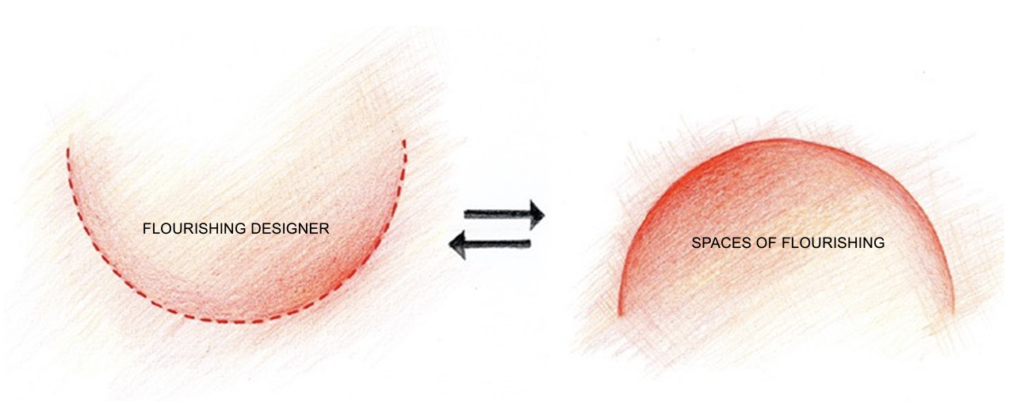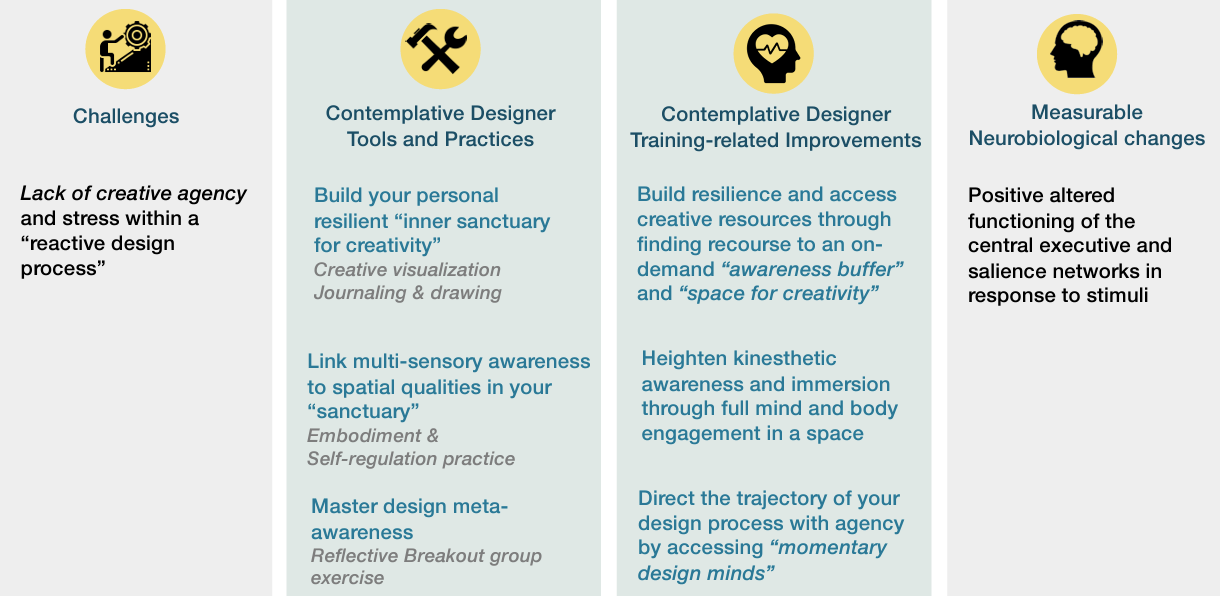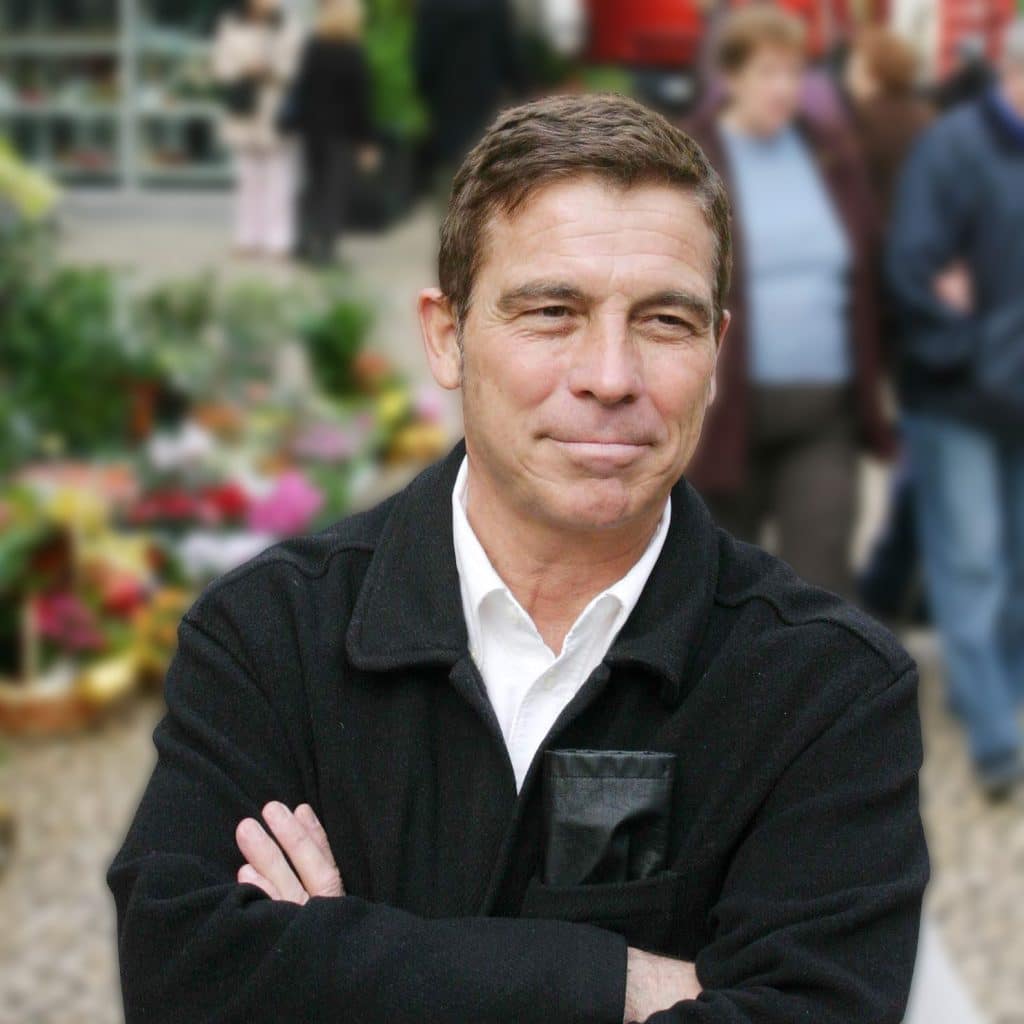Sarika Bajoria
Contemplative Designer
Sarika Bajoria Unlimited, New York, New York
sarika.bajoria@gmail.com
Intention:
Our built environment is a critical factor as to whether we will successfully meet the unprecedented challenges of the coming century. It is incumbent upon architects and design organizations to design built environments that fulfill the higher human needs of self-actualization and self-transcendence.1 Are architects and design firms ready to take on this urgent responsibility?
Architects and designers are focused primarily on deploying “outer technologies” during the design process. This results in an architecture that has been “accused of emotional coldness, restrictive aesthetics and a distance from life”.2 Few are trained in “inner technologies” of design – methods to access inner resources of creativity, empathy, resilience, wisdom, and felt senses so that these crucial qualities can be brought to bear in their designed environments to tune them “with realities of life and human mind”.3 Indeed, designers are so focused on “outer spaces” and the design methods required to create them that their “inner spaces” remain blind spots.
Furthermore, in addition to the routine challenges intrinsic to design life, a mental health crisis in the profession has arisen in our post-pandemic environment that is characterized by heightened anxiety, burnout, and disconnection.4 5 In such circumstances how can design organizations and their designers act as the intentional instruments of design necessary for transformative built spaces to become the norm and not the exception?
I believe that the answer to this question is built on three major pillars:
- Mastering the new science of human flourishing.
- Designing with knowledge of how built environments serve as mediators of human flourishing.
- Living the credo that “outer spaces” of flourishing depend on the quality of the “inner spaces” of their designers.
A clear understanding of what “flourishing” actually entails is critical when thinking about how to develop effective “inner technologies” that can be readily synergized with the “outer technologies” of the design process. Drawing on neuroscience, psychology, and contemplative practice, the burgeoning field of the “science of human flourishing” proposes that human flourishing is more than just personal well-being. It is “actively empowered well-being” that expands beyond the individual to her community and environment. Flourishing is a trainable skill based on psycho- and neuroplasticity. By mentally training in a range of methods derived from traditional contemplative traditions and contemporary psychological concepts and which are aligned with four core dimensions (awareness, connection, insight and purpose) individuals can achieve sustainable positive neurobiological and psychological changes.6 7
Contemplative Designer is founded on the tenet that in order to design built environments of flourishing, designers have to first flourish in their day-to-day design practices to a level commensurate with their highest intentions for the design of the built world (Figure 1). Based on the three pillars above, I have developed the Contemplative Designer pedagogical framework by synthesizing my experience of practicing architecture for over 21 years, teaching of contemplative practice for over 15 years, and research in neuroaesthetics, psychology and contemplative practice. My mission is to empower practicing architects and design students to transform their daily design practices into both training grounds for flourishing and the means to create built environments of flourishing by putting into practice contemplative design methods that are customized to their challenges, skills and expertise.8

Figure 1: By training in the dimensions of flourishing through the design process, the “flourishing designer” will naturally imbue the spaces she/he designs with the same dimensions of flourishing. Copyright 2023 Sarika Bajoria Unlimited LLC. All rights reserved.
Methods:
Two levels of workshop offerings are presented for practicing architects and design students:
- “Focus on the Four” Workshop (60 minutes) for larger audiences. Participants i) learn how the three pillars of the Contemplative Designer framework are key to their own flourishing and their ability to consciously design built spaces of flourishing and ii) engage in four reflective design-focused practices from the framework to promote greater agency, conscious collaboration, self-knowledge and design intention in their design practices.
- “Foundational Four Workshops” (each 90 minutes) for smaller groups of participants. Participants dive deeper into each of the four “inner technologies” of the Contemplative Designer framework through individual and group practices to achieve significant and sustainable improvements in their design lives at the primary levels of awareness, insight, connection, and purpose (Figure 2):
| Contemplative Designer “Foundational Four” Workshops | Framework for cultivation of Human Flourishing: Four dimensions and skills | |
| 01 | Creating Space for Creativity and Building Resilience | Awareness Skills : Attention regulation Meta-awareness Self-awareness |
| 02 | Expanding Perspectives for Conscious Collaboration | Connection Skills : Empathy Kindness Compassion |
| 03 | Form Follows Intention: Deploying the Design Momentum Equation | Insight Skills : Self-inquiry Self-knowledge Self-actualization |
| 04 | The Future is Now: Iterating and Becoming an Instrument of Design | Purpose Skills : Clarity of Purpose Finding meaning Transcending the Self |
2.1 Creating Space for Creativity and Building Resilience
Participants build their own inner sanctuary for creativity to help transform auto-pilot reactions to design challenges into resources for creativity and explore how intentionally directing momentary design minds provides greater agency and resilience in their design practice (Figure 3 & 4).
2.2 Expanding Perspectives for Conscious Collaboration
Participants discover how the first contact method of listening with empathy and wonder empowers problem solving and conscious collaboration with clients, colleagues, and the design process itself, and how viewing every project aspect with expanded perspectives can engender socially and ecologically conscious project outcomes.
2.3 Form follows Intention: Deploying the Design Momentum Equation
Participants deepen self-knowledge through designing an embodied mental and emotional blueprint of the future designer they want to become which is key to supercharging their design practice today and how deploying the design momentum equation ensures that their highest intention for the built environment is put into constant action.
2.4 The Future is Now: Iterating and Becoming an Instrument of Design
Participants investigate how insights from neuroaesthetics on universal human psychological and neurological responses to built environments can open new doors in their design process and how to bring the emerging future of their potential as Eco- designers into the present moment through the process of iterating and becoming an Instrument of Design to create “built environments of flourishing”.

Figure 3: Overview of the Workshop 1 Contemplative Designer tools and practices and global anticipated training-related improvements. Anticipated neurobiological changes from “Awareness” dimension of Human Flourishing presented by Dahl et al (PNAS, 2020). Due to figure limitations this table is being shown as an example. Detailed outlines of the other workshops will be presented at the ACSF symposium. Copyright 2023 Sarika Bajoria Unlimited LLC. All rights reserved.
| Time | Contemplative Designer Tools & Practices | Benefits for Designers |
| 13 | Warm up Exercise with partner: Being creative under pressure | Become aware of your “reactive” responses and how you process your emotions when asked to be creative under pressure. |
| 13 | Creative Visualization Practice: Where is the extraordinary experience of a place? | Seize the tether linking your past extraordinary experience of a built space to your ability to experience it anew at any moment at will. |
| 10 | Contemplative Designer Concept: Creating space for creativity | Discover why building an “inner sanctuary” for flourishing is key to responding “creatively” rather than “reactively” to challenges that arise during the design process. |
| 18 | Contemplative Practice: Building your inner sanctuary for creativity | Learn to design and build your own unique “inner sanctuary” – brick by brick – where you can access creative resources easily for your design practice to flourish. |
| 8 | Reflective Drawing + Journaling exercise: Crystallizing your “inner sanctuary” for creativity | Crystallize the spatial, sensory, emotional and embodied experience of inhabiting your newly designed “inner sanctuary” through drawing and journaling. |
| 7 | Contemplative Designer Concept : Choosing “momentary design minds” | Understand that you can direct the trajectory of your design process in flow with increased agency, moment by moment, when designing from your “inner sanctuary”. |
| 15 | Breakout group exercise: Directing the cause-and-effect engine of design | Describe a small section of your previous design day to your teammates from a new space of awareness so that you see each “decision moment” with new clarity. |
| 90 mins | Larger Group Discussion + Q&A |
Case study of a workshop series at mid-sized architecture firm:
The above workshops have been offered to many design professionals and students at design firms, academic institutions, conferences, and online forums. Here, I will present a case study of a U.S.-based 300+ person architecture firm where the following workshops were presented in 2022:
- A firmwide virtual “Focus on the Four” workshop.
- An in-person series of “Foundational Four” workshops for a smaller group of employees over two consecutive days.
Diverse professionals (architects, interior designers, landscape architects, etc; early-, mid-, and late-career) participated in the program.
Prior to and following the workshop series participants were invited to complete an anonymous, detailed survey consisting of multiple choice and short response questions. Participants reported (among other positive outcomes) increases in:
- Confidence to be creative on demand and respond effectively to design challenges (23% prior to the workshop series versus 75% after the workshop series);
- Capacity to engage fruitfully with difficult clients and colleagues (23% versus 63%);
- Clarity of vision of their future designer self and the impact they want to make on the built environment (23% versus 75%);
- Ability to align their day-to-day design practices with their highest intentions for the built environment (8% versus 50%).
In addition to survey findings, I will present feedback from participants on their experiences of the workshop series, including what practices they found most beneficial and what they found most challenging.
I will also provide some reflections on bringing Contemplative Designer to practicing designers at this firm and at other firms, institutions and conferences more generally, with particular focus on the challenges in introducing a contemplative design framework to busy professionals in high- stress work environments.
To encourage design firms to invest time and resources into Contemplative Designer methods they must have confidence that workshop offerings will have a measurable and sustainable positive effect on their employees’ daily design practices and the built environments they design. However, because participants engage in the workshops over a short time frame, and because there has been little opportunity to provide ongoing support to and follow-up analysis of workshop participants, this task is quite challenging.
Engaging design students
In Fall 2023 I will co-teach an undergraduate seminar at Parsons School of Constructed Environments with Cotter Christian entitled “Contemplative Design and Sacred Spaces”. I will conclude my presentation by providing an overview of the pedagogical aspirations and draft curriculum for this seminar. This 15-week engagement with fifteen students will enable in-depth exploration of the Contemplative Designer framework’s “inner technologies” and monitoring at several time points, including beyond seminar completion, how these tools are affecting the students’ mental health and design process in studio and their designed projects.
In addition to benefitting students at several levels, I anticipate that this seminar will provide robust empirical data on the short- and longer-term impact of Contemplative Designer on design life and projects, and insights into how to ensure that this pedagogy is relevant to the next generation of architects.
1 Maslow, Abraham H. Motivation and Personality. Harpers.(1954)
2 Pallasmaa, Juhani “Empathic and Embodied Imagination: Intuiting Experience and Life in Architecture” in Architecture and Empathy. (Tapio Wirkkala Rut Bryk Foundation, 2015)
3 Pallasmaa, Juhani “Empathic and Embodied Imagination: Intuiting Experience and Life in Architecture”
4 Flynn, Katherine. “The Burnout Problem in Architecture”. AIA Architect.(April 2022). Website: https://www.architectmagazine.com/aia-architect/aiafuture/the-burnout-problem-in-architecture_o
5 Exley, Peter, Garmisa, Gregg and White, Korey. “We Need a Safe Place to Address our Mental Health”. Chicago Architect.(Summer 2022).
6 Dahl, Cortland, Wilson-Mendenhall, Christine and Davidson, Richard: “The plasticity of well-being: A training-based framework for the cultivation of human flourishing.” PNAS (December 7, 2020).
7 Lee Matthew T, Kubzansky Laura D, VanderWeele Tyler J. Measuring Well-being: Interdisciplinary Perspectives from the Social Sciences and Humanities. Oxford University Press. (2021)
8 I have described the research and development of the Contemplative Designer framework in previous ACSF symposia abstracts and other platforms:
Bajoria, Sarika. “Becoming Mindful Architect: A Contemplative Design Process to Create Spaces of Continuity. A Workshop” ACSF 11 2019 Symposium Abstract.
Bajoria, Sarika. “Becoming Mindful Architect: A Contemplative Design Process to Create Spaces of Connectivity for the Displaced.” ACSF 10 2018 Symposium Abstract.
Bajoria, Sarika. “Becoming a Mindful Architect”. Faith & Form Journal. Volume 52, Issue 2 (June 1, 2019)



